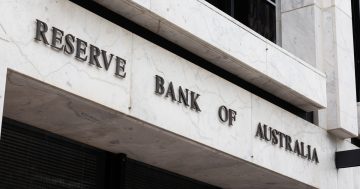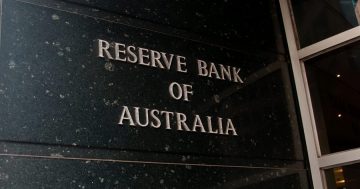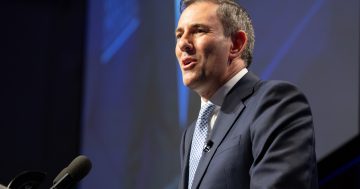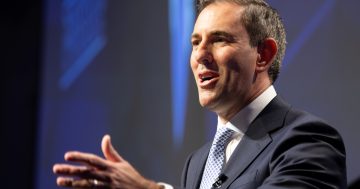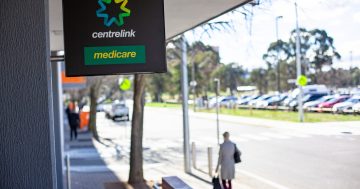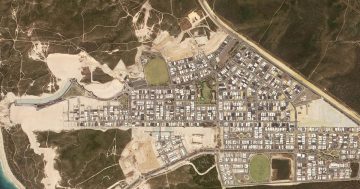The recent spate of double hikes appears to be near an end and rate cuts next year could be a real possibility — in the latest unpredictable twist in our economy, writes Ian Verrender*
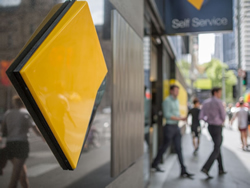 It may have gone largely unnoticed among the screeching sirens and the roar of emergency vehicles — but interest rates actually fell last week.
It may have gone largely unnoticed among the screeching sirens and the roar of emergency vehicles — but interest rates actually fell last week.
That’s right.
In the rush to deliver the bad news on a hugely telegraphed double hike in the official cash rate — which the big four banks passed on in full on their variable rates — most news outlets overlooked the fact that some key lending rates were actually slashed.
Fixed-term rates, especially for four years, were cut — in some cases, dramatically — by the likes of Commonwealth Bank, Westpac, Macquarie and Suncorp.
The decisions were a sudden reversal to some savage hikes on fixed rates just weeks ago by our major lenders.
Both CBA and Westpac slashed their four-year loans to 4.99 per cent.
In CBA’s case, that lopped around 1.6 percentage points off its previous level so that it now sits well below the variable rate of 5.8 per cent.
Was it because they were feeling a little generous? Probably not.
The more likely explanation is that as the chances of a recession continue to grow, the interest rate trajectory into orbit that most experts were predicting just weeks ago is being hurriedly dismantled and the prospect of lower rates next year is rising.
After pressuring central banks from the beginning of last year to begin a spate of blistering rate hikes, global money markets suddenly have eased off.
Once again, however, central banks including the Reserve Bank of Australia, are paying little attention.
They’ve shelved their decades-long held determination to avoid recession at all costs and, instead, are doggedly focused on putting a lid on inflation.
But for how long?
Hike rates … until you have to cut them
The RBA and its compadres arrived at the inflation-fighting party very late.
With just a few dregs left in the punch bowl, they have gone hell for leather.
They’ve pushed through interest rate hikes in the past few months at the quickest pace in decades after years of deliberately encouraging almost everyone to dive headlong into debt.
It is a strategy that runs completely counter to central bank ethos: to scope out the future, act ahead of the curve, telegraph every move and take steady and deliberate action to keep the economy on an even keel.
It may now well be that they are about to make the same mistake on the recession front, as they jerk from one extreme to the other, desperately slamming on the brakes.
It already is having an impact.
Oil prices have plunged to their lowest in six months — before Vladimir Putin launched his ill-fated war against Ukraine.
Global money markets are unwinding rate hike bets as the smell of recession rises.
Last Friday, shortly after it raised interest rates by the most in 27 years, the Bank of England delivered a bombshell.
The UK, it said, was likely to slide into recession late this year and stay there for most of next year.
Besieged by soaring energy bills as a result of Russia’s invasion of Ukraine, the Bank of England sees inflation topping 13 per cent.
BoE governor Andrew Bailey distilled the dilemma facing him and the rest of the developed world’s monetary authorities as they inflict even more pain upon households already reeling under the impact of soaring costs that largely are being driven by external forces.
“I know that they will feel, ‘Well, why have you raised interest rates today, doesn’t that make it worse from that perspective in terms of consumption?’
“I’m afraid my answer to that is, it doesn’t because I’m afraid the alternative is even worse in terms of persistent inflation.”
So, there’s the updated playbook.
Hike rates at a sudden clip until you plunge the global economy into recession and then try to deal with the misery afterwards by … cutting interest rates.
Housing market slide gathers pace
The warning signs are flashing red everywhere.
Sydney and Melbourne, the two capital city housing markets that led the extraordinary surge in the post-pandemic real estate boom, are dropping and the pace of declines is accelerating.
Sydney prices dropped 2.2 per cent in July with Melbourne down 1.5 per cent.
Auction clearance rates, which were well above 80 per cent during the boom, have plunged, with Sydney and Melbourne auctions clearing at just 52 per cent and 54 per cent respectively.
That’s not surprising.
The extraordinary growth in credit for housing, which surged more than 100 per cent between May 2020 and January this year — when more than $33 billion in new housing loans were extended during that month alone — has suddenly gone into reverse, particularly for owner-occupiers.
It dropped 4.4 per cent in June and — while remaining at historically high levels — the mood clearly has shifted.
Sellers, alarmed at the prospect of not shifting their properties, are retreating with national listings off 8.4 per cent this past weekend nationally, compared to the same time last year, with Sydney bearing the brunt with a 15 per cent drop.
Banks have responded to the new environment by drastically reducing the amount they will lend to new borrowers — particularly first-home buyers — which is a phenomenon that will feed through to even lower prices and auction clearances.
The debt hangover from the lending binge — the second biggest on record since the 1970s — is well and truly underway.
According to Jonathon Mott — an analyst at investment bank Barrenjoey — if the RBA continues to hike rates at the speed of recent months, a large number of new Australian homeowners could end up in harm’s way.
In an alarming report released last week, he questioned the logic behind forecasts that the RBA would continue hiking rates to 3 per cent and possibly beyond this year.
Should that occur, he argued that many households — particularly first home buyers — would struggle to meet repayments.
“For the first time in several decades, we are likely to see a wave of fully employed borrowers falling into delinquency as they simply can’t make ends meet,” he said.
Local rates may be approaching the peak
Australia is uniquely sensitive to interest rate movements — for two reasons.
First, our households are amongst the world’s most indebted when compared to income.
Most of that debt is attached to real estate which leads to the second big issue.
Our home loans are overwhelmingly variable rate loans.
Even our fixed rate terms are for relatively short periods.
In many parts of the US, in contrast, home loans are set at a fixed rate for the life of the loan.
That gives the RBA more bang for its buck.
A shift in the official cash rate has more impact than many other nations as it flows through to a relatively large number of households which then alters their spending patterns.
Another interpretation, however, is that — given the sensitivity — the RBA needs to be extraordinarily cautious and more judicious when it comes to hiking rates.
For months, the RBA has argued that the build-up in savings and the buffers accumulated by Australian households will provide ample protection from a rapid lift in interest rates.
That’s not entirely correct as the pain is not being distributed evenly.
Older, more established households may have built up a sizeable buffer.
But most of those who bought in during the most recent boom are unlikely to have any buffer at all.
There’s a great deal at stake: about $250 billion in fact.
That’s how much was borrowed — much of it by first home buyers — during the great lending binge to finance homes at the peak of the market.
With variable rates now tracking way above four-year fixed term rates, the writing is on the wall.
The recent spate of double hikes appears to be near an end and rate cuts next year could be a real possibility.
*Ian Verrender is the ABC’s Business Editor.
This article first appeared at abc.net.au


